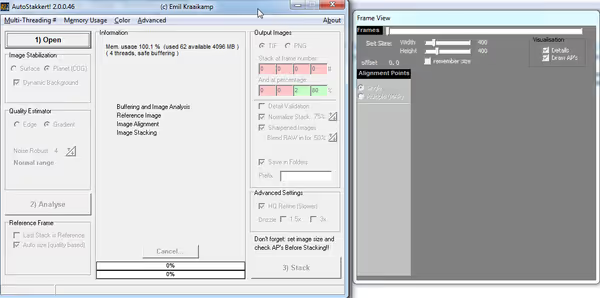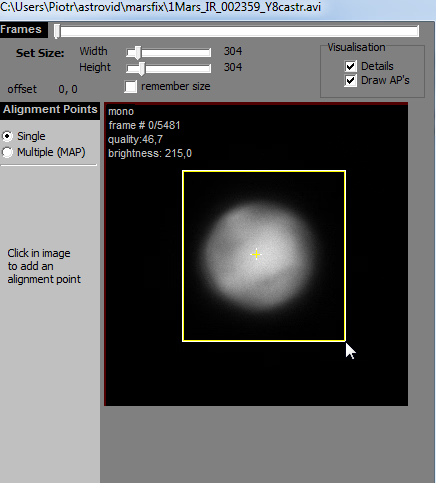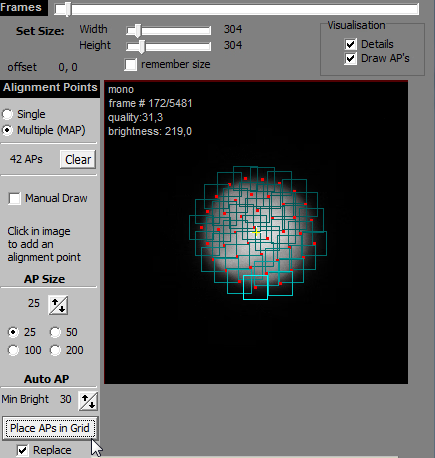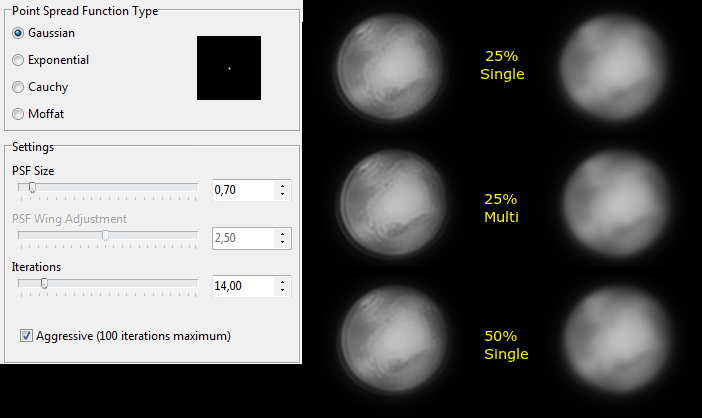Planetary, Lunar and Solar image stacking in Autostakkert2
Autostakkert 2 is a new version of a popular planetary stacking program. The new version brings a lot of improvements as well as new features like support for surface stacking - Lunar and Solar AVIs.
The app is free and you can download it from the application site. For planetary AVIs you will also need Castrator that aligns and centers every planetary frame on the AVI. Just open you recording, select cropped side and start the process. Cropped and aligned Castrator avis may then be used in Autostakkert2. For Lunar and Solar images it's not needed.
In Autostakkert 2 you open your AVI files, tune the application settings, select the alignment area and you start stacking. Multiple planetary AVIs may be stacked in one run. For surface AVIs you need to configure and stack one AVI at a time (no batch support).
Settings

When you launch AS2 you will get two windows. One for setting, and on the right side smaller one for preview and alignment area configuration.
- Image Stabilization: choose if it's a planetary or Lunar/Solar surface AVI
- Quality Estimator: choose an algorithm for quality measurements. The "Gradient" is the default one and works nicely. "Noise Robust" may improve it performance. For very good AVIs (super seeing) user low numbers, for very bad - bigger.
- Output Images: select file format (TIFF recommended)
- Stack at frame number: how many best frames should be used to make a stack
- And at percentage: how many % of best frames should be used to make a stack
- Normalize Stack: if checked it will normalize stacks brightness (may help to get quite good initial color balance)
- Sharpened Images: if checked it will make also sharpened images out of the stacks (for preview)
- Drizzle: upsizing stacks by Drizzle - either 1.5x or 3x.
AVI preview

When you open some AVIs you will get a preview in the right window. You may select either single or multiple alignment areas on the planet or Sun/Moon surface. For single area just select it with a mouse. When you do that you may start stacking by clicking the "Stack" button in the main window.
For surfaces and optionally for planets you may use multiple alignment points. Just set "Alignment Points - Multiple", set size - "AP Size" and place them on the image using "Place APs in Grid" or by doing it manually:

Results
Raw stacks will be saved in subfolders. If you are uncertain if the stacking settings are optimal you may make few stacks at various settings and compare them. Here are some of my test results - stacks on single and multiple alignment points (25, 50% out of 5000 frames):
Comment article